
Lake freighters, or lakers, are bulk carrier vessels that operate on the Great Lakes of North America. These vessels are traditionally called boats, although classified as ships.
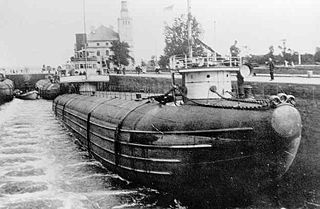
The Thomas Wilson was a whaleback freighter built in 1892 and used to haul bulk freight on the Great Lakes. The ship sank in Lake Superior just outside the harbor of Duluth, Minnesota, United States, on 7 June 1902, after a collision with the George Hadley. The wreck of the Thomas Wilson is one of the best remaining examples of a whaleback steamer, and it is also significant for the changes made in operating procedures at the Duluth harbor. The remains of the ship were listed on the National Register of Historic Places in 1992.

SS Henry B. Smith was a steel-hulled lake freighter built in 1906 by the American Ship Building Company at Lorain, Ohio USA. The steamship was owned by the Acme Transit Company of Lorain, Ohio, under the management of William A. Hawgood. The hull number was 343 and the registration number was US203143.

The Mataafa Storm of 1905, was a storm that occurred on the Great Lakes on November 27–28, 1905. The system moved across the Great Basin with moderate depth on November 26 and November 27, then east-northeastward across the Great Lakes on November 28. Fresh east winds were forecast for the afternoon and evening of November 27, with storm warnings in effect by the morning of November 28. Storm-force winds and heavy snows accompanied the cyclone's passage. The storm, named after the steamship Mataafa, ended up destroying or damaging about 29 vessels, killing 36 seamen, and causing shipping losses of US$ 3.567 million on Lake Superior.

The SS Superior City was considered a pioneer vessel at her launching in 1898. She was the largest vessel ever built on freshwater at that time. She sailed the Great Lakes for twenty-two years until she sank after a collision in 1920 with the steamer Willis L. King in Whitefish Bay of Lake Superior that resulted in the loss of 29 lives. Controversy was immediate over the collision. It was subsequently ruled that the captains of both ships failed to follow the “rules-of-the-road”. Controversy started again in 1988 when the Great Lakes Shipwreck Historical Society produced a video called "Graveyard of the Great Lakes" that included extensive footage of the skeletons of the Superior City crew. The controversy continued as late as 1996 over artifacts removed from her wreck. She is now a protected shipwreck in the Whitefish Point Underwater Preserve.

SS Comet was a steamship that operated on the Great Lakes. Comet was built in 1857 as a wooden-hulled propeller-driven cargo vessel that was soon adapted to carry passengers. It suffered a series of maritime accidents prior to its final sinking in 1875 causing the loss of ten lives. It became known as the only treasure ship of Lake Superior because she carried 70 tons of Montana silver ore when it sank. The first attempts to salvage its cargo in 1876 and 1938 were unsuccessful. Comet was finally salvaged in the 1980s when the Great Lakes Shipwreck Historical Society illegally removed artifacts from the wreck. The artifacts are now the property of the State of Michigan and are on display as a loan to the Great Lakes Shipwreck Museum. The fate of her silver ore cargo is unknown. Comet's wreck is now protected by the Whitefish Point Underwater Preserve as part of an underwater museum.

The SS Vienna was built in 1873 during the era when steamers were built with sail rigging. She had a 19 year career marked with maritime incidents including sinking when she was just three years old. She sank for her final time in fair weather in Whitefish Bay in Lake Superior after she received a mortal blow when she was inexplicably rammed by the steamer Nipigon. Although there were no deaths when the Vienna sank for the last time, more than 100 years later her wreck claimed the lives of 4 scuba divers, the most of all the wrecks in the Whitefish Point Underwater Preserve that now protects her as part of an underwater museum. Her wreck was stripped of artifacts that resulted in the Michigan Department of Natural Resources seizing her artifacts in a raid on the Great Lakes Shipwreck Museum in 1992. Her artifacts are now on display in this museum as loan from the State of Michigan.

The Sagamore is reported to be the best example of a whaleback barge among Great Lakes shipwrecks. Only 44 whalebacks were ever built, and out of the 26 that sank, only 8 sank in the Great Lakes, most of them being blown up for blocking shipping channels. She sank in 1901 in the shipping lane near the Soo Locks when she was rammed by the steel steamer Northern Queen in one of Whitefish Bay's notorious fogs. Her captain and two crew members went down with her. Artifacts from her wreck were illegally removed in the 1980s. Her artifacts are now the property of the State of Michigan and are on display as a loan to the Great Lakes Shipwreck Museum. The wreck of the Sagamore is protected as part of an underwater museum in the Whitefish Point Underwater Preserve.

The lake freighter SS Henry Steinbrenner was a 427-foot (130 m) long, 50-foot (15 m) wide, and 28-foot (8.5 m) deep, dry bulk freighter of typical construction style for the early 1900s, primarily designed for the iron ore, coal, and grain trades on the Great Lakes. Commissioned by the Kinsman Transit Co. of Cleveland, Ohio she was launched as hull number 14 by Jenks Ship Building Co. of Port Huron, Michigan. Her design featured a forward forecastle containing crew cabins topped with an additional cabin and pilot house. The mid section was a long nearly flat deck over the cargo holds only interrupted by 12 hatches fitted with telescoping type hatch covers. The aft end featured a large cabin situated over the engine room containing the galley, mess rooms, and crew quarters and was topped with a smoke stack and air vents. The Steinbrenner later featured a "doghouse" cabin aft of her smoke stack to house added crew from a change in the crew watch system on the Great Lakes.

The SS Benjamin Noble was a lake freighter that operated on the Great Lakes. Built in 1909 by the Detroit Shipbuilding Company, she was 239 feet (73 m) in length and had a beam of 40 feet (12 m). She was built as a "canaller," a vessel designed for use in what were then the dimensions of the Welland Canal, but was converted by her owners for services in the open Great Lakes. Heavily laden and top-heavy with a cargo of railroad rails, she sank in a Lake Superior storm near Knife River, Minnesota, in April 1914 with the loss of all hands.
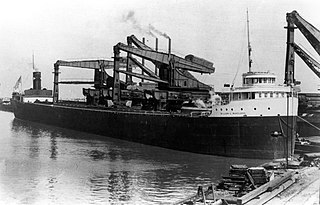
SS William C. Moreland was a 600-foot (180 m) long Great Lakes freighter that ran aground on Sawtooth Reef, Lake Superior on 18 October 1910, only a month after entering service. Visibility was poor due to the smoke from several forest fires, causing the William C. Moreland to ran full steam onto a reef. There were many attempts to salvage the ship, but eventually only the 278-foot (85 m) long stern was salvaged and was used to build the 580-foot (180 m) long Sir Trevor Dawson.

SS Robert Wallace was a wooden-hulled American bulk freighter that served on the Great Lakes of North America from her construction in 1882 to her sinking in 1902 on Lake Superior near the town of Palmers, St. Louis County, Minnesota, United States. On November 17, 1902 shortly after leaving Superior, Wisconsin with a cargo of iron ore, Robert Wallace sprang a leak and sank. Her wreck was found in 2006, and on October 14, 2009, the wreck of Robert Wallace was listed in the National Register of Historic Places.

The George Spencer was a wooden lake freighter that sank on along with her schooner barge Amboy on Lake Superior, near Thomasville, Cook County, Minnesota in the Mataafa Storm of 1905. On April 14, 1994, the wrecks of the Spencer and the Amboy were listed on the National Register of Historic Places.

The Amboy was a wooden schooner barge that sank along with her towing steamer, the George Spencer on Lake Superior off the coast of Schroeder, Cook County, Minnesota in the United States. In 1994 the remains of the Amboy were added to the National Register of Historic Places.
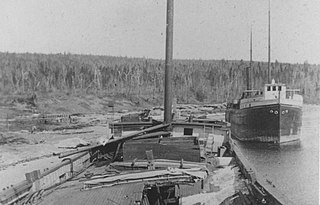
The AmboyandGeorge SpencerShipwreck Site is an archeological shipwreck site which consists of the wrecks of the wooden bulk freighter George Spencer and the wooden schooner-barge Amboy. Both vessels were wrecked during the Mataafa Storm of 1905. In 1994 the site was added to the National Register of Historic Places.

SS Etruria was a steel hulled lake freighter that served on the Great Lakes of North America from her construction in 1902 to her sinking in 1905. On June 18, 1905, while sailing upbound on Lake Huron with a cargo of coal, she was rammed and sunk by the freighter Amasa Stone 10 miles (16 km) off Presque Isle Light. For nearly 106 years the location of Etruria's wreck remained unknown, until the spring of 2011 when her wreck was found upside down in 310 feet (94 m) of water.

SS S.R. Kirby was a composite-hulled bulk carrier that served on the Great Lakes of North America from her construction in 1890 to her sinking in 1916. On May 8, 1916, while heading across Lake Superior with a cargo of iron ore and the steel barge George E. Hartnell in tow, she ran into a storm and sank with the loss of all but two of her 22-man crew off Eagle Harbor, Michigan. For over 102 years the location of S.R. Kirby's wreck remained unknown, until June 2018, when her wreck was discovered by the Great Lakes Shipwreck Historical Society (GLSHS) in 825 feet (251 m) of water, completely broken up.

SS Russia was an iron-hulled American Great Lakes package freighter that sank in a Lake Huron gale on April 30, 1909, near DeTour Village, Michigan, with all 22 of her crew and one passenger surviving.
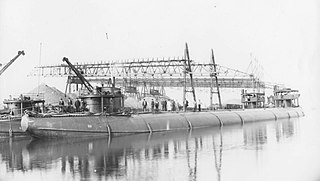
115 was an American whaleback barge in service between 1891 and 1899. She was built between May and August 1891, in Superior, Wisconsin by Alexander McDougall's American Steel Barge Company, for the "McDougall fleet", based in Buffalo, New York. She was one of a class of distinctive, experimental ship designed and built by McDougall. The whalebacks were designed to be more stable in high seas. They had rounded decks, and lacked the normal straight sides seen on traditional lake freighters. 115 entered service on August 25, hauling iron ore from Superior.
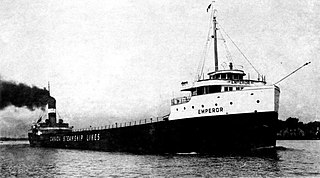
SS Emperor was a steel-hulled Canadian lake freighter in service between 1911 and 1947. She was built between 1910 and April 1911 by the Collingwood Shipbuilding Company in Collingwood, Ontario, for Inland Lines, Ltd., of Midland, Ontario. She entered service on May 3, 1911. Emperor was sold to Canada Steamship Lines of Montreal, Quebec. Under the ownership of Canada Steamship Lines, she carried a wide variety of cargoes, but most frequently iron ore to Point Edward, Ontario, where it would be transported to Hamilton, Ontario, by train. After the opening of the fourth Welland Canal, Emperor carried the ore directly to Hamilton. She was involved in several accidents throughout her career.
























